Is buckwheat gluten free? Has this question crossed your mind too? The short answer is yes, buckwheat is gluten-free. Read on to learn more about this ancient pseudo-cereal—its origins, and nutritional facts. Plus learn how to cook buckwheat easily in under 15 minutes!
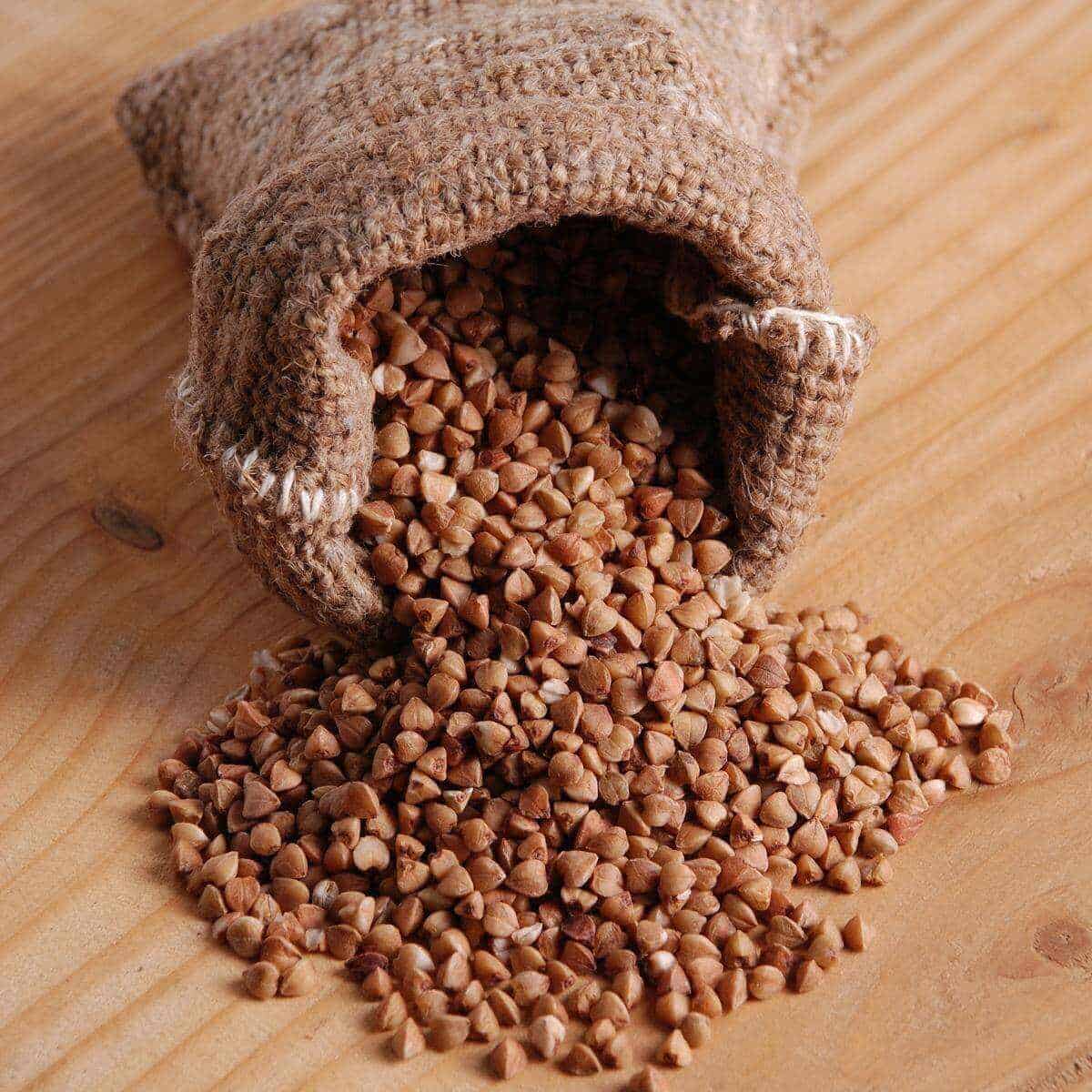
Save This Recipe
Enter your email & I'll send it to your inbox.
By submitting this form, you consent to receive emails from MyGoodFoodWorld
Until just a couple of years ago, buckwheat, for me, was just another ingredient in the world of cooking. I had read about how good it was for health, but I didn’t care to dig deeper since I was, and still am, a die-hard fan of rice (jeera rice is my ultimate comfort food) and wheat (hello, turmeric tortillas!). So, I didn’t feel the need to explore further.
About a year ago, I realized (thanks to my detailed food diary) that I’m sensitive to gluten. For months, I stayed in denial, stubbornly ignoring the bloating and brain fog. I just couldn’t imagine giving up wheat! The thought of never eating toast, roti, or naan again made me so sad (yes, I was that dramatic).
While on the topic, here is an interesting article that I wrote on roti vs naan.
But my gluten intolerance was just as stubborn, bringing along frequent headaches (which had never happened before!). It was time to take things seriously and approach it with an open mind.
When I finally accepted my gluten sensitivity, a wonderful world of gluten-free grains and cereals opened up for me! Millets, quinoa, amaranth, oats, corn, rice (still my favorite!), and buckwheat.
For easier navigation, I have organized this article into sections. Feel free to use the links below to jump to the section you want to read first.
Jump to:
About Buckwheat
So, my first question to family, friends, and well-wishers who suggested buckwheat as a wheat alternative was: What is buckwheat, if not just another type of wheat?! I mean, it has the word "wheat" right in it, for goodness' sake!
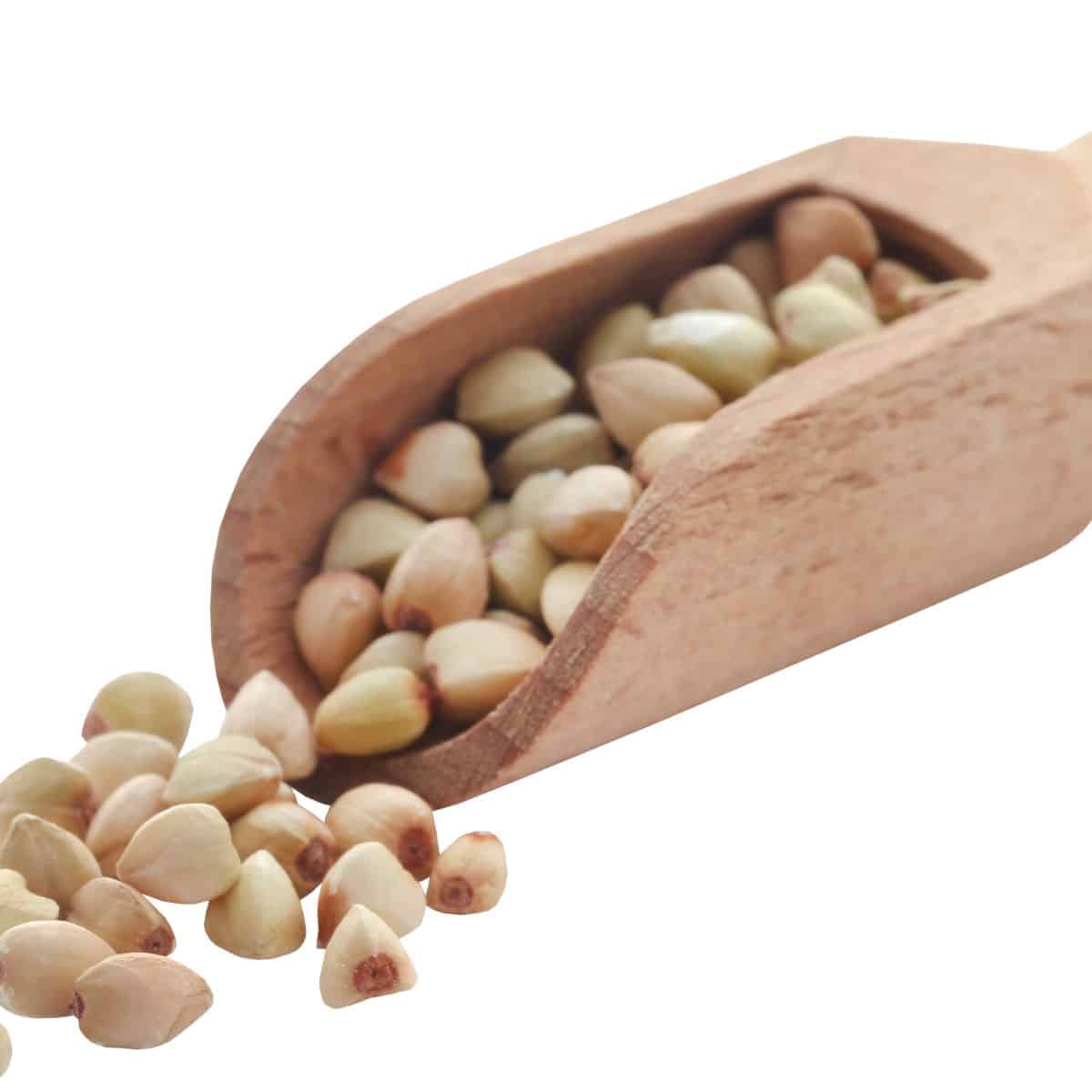
But I couldn’t have been more wrong. Buckwheat is anything but wheat! It’s not even a grain—or a seed! Unbelievable, right?! - read on to find out more fascinating facts.
Is buckwheat a grain or wheat?
The answer is, neither! Buckwheat is not wheat and it is not a grain either.
Buckwheat seeds are the hulled seeds of the buckwheat plant. At first glance, they remind me of steel-cut oats, only bigger. After reading up a bit more, I learned that the uniquely triangle-shaped seeds are called buckwheat because they resemble the larger seeds of the beech tree. And, since ancient times, buckwheat has been used as a wheat substitute.
Buckwheat is related to leafy vegetables like rhubarb and sorrel (what?!). It’s naturally gluten-free and isn’t even a grain! This pseudo-cereal is safe for people on a gluten free diet and perfect for those who want to follow a grain-free diet.
What are Buckwheat groats?
The hulled buckwheat seeds are called groats and they are used, most commonly, for cooking. Simply put, buckwheat groats are the buckwheat seeds with their outer skin removed. As a result, groats taste mild and creamy when cooked. Check out the section below on how to cook groats in just 15 minutes!
Is buckwheat flour gluten free?
Yes, buckwheat flour is gluten-free, and since buckwheat isn’t even a grain to begin with, buckwheat flour is also grain-free. However, here’s the catch: if the buckwheat seeds are ground in a mill that also processes grains containing gluten, there’s a risk of cross-contamination. So, if you're buying buckwheat flour from the store, make sure it’s clearly labeled as gluten-free.
Buckwheat flour made from hulled seeds is lighter in color, while flour made with the seed skins intact is darker.
I love making these buckwheat naan on days when I want to have a grain-free meal.
Buckwheat - the global superstar!
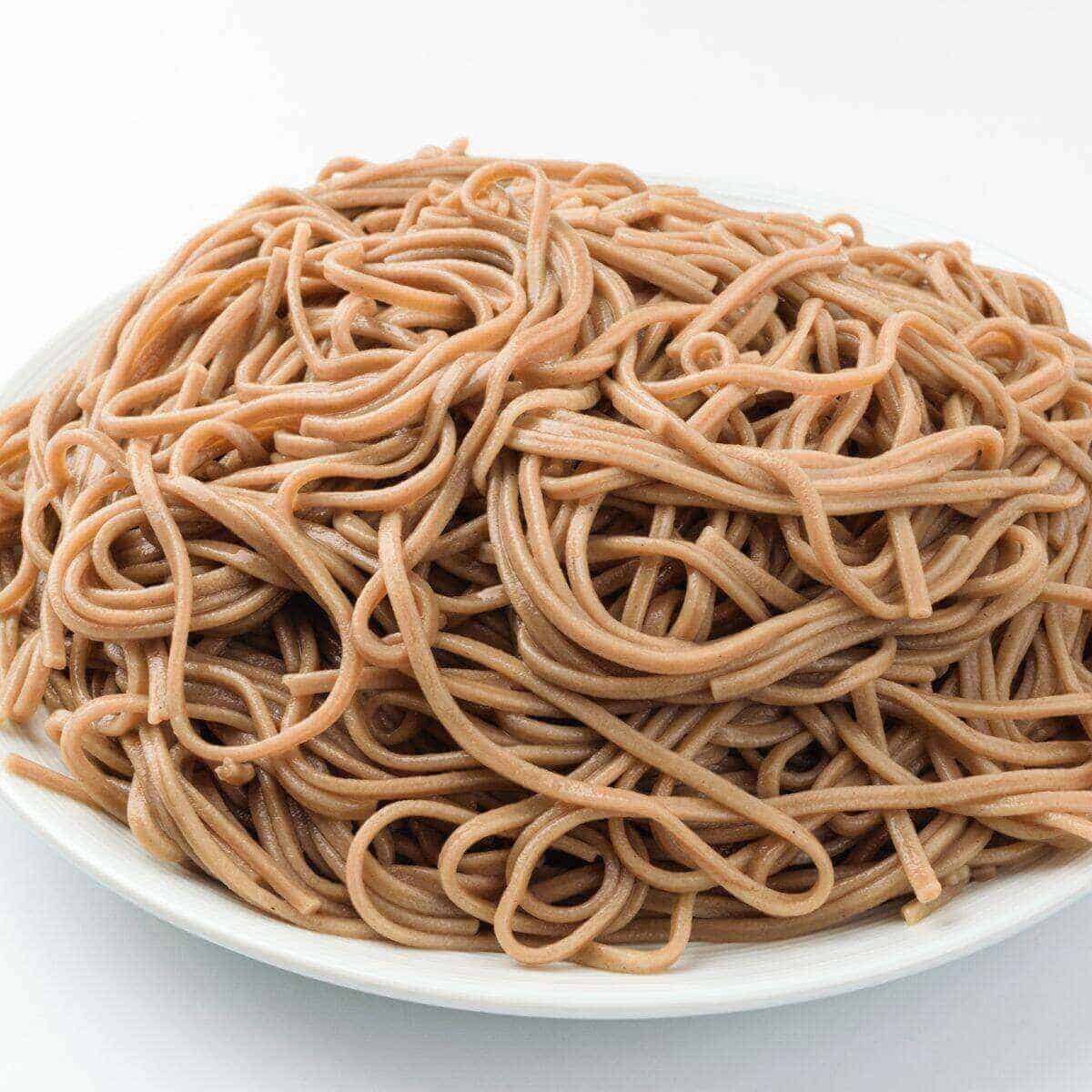
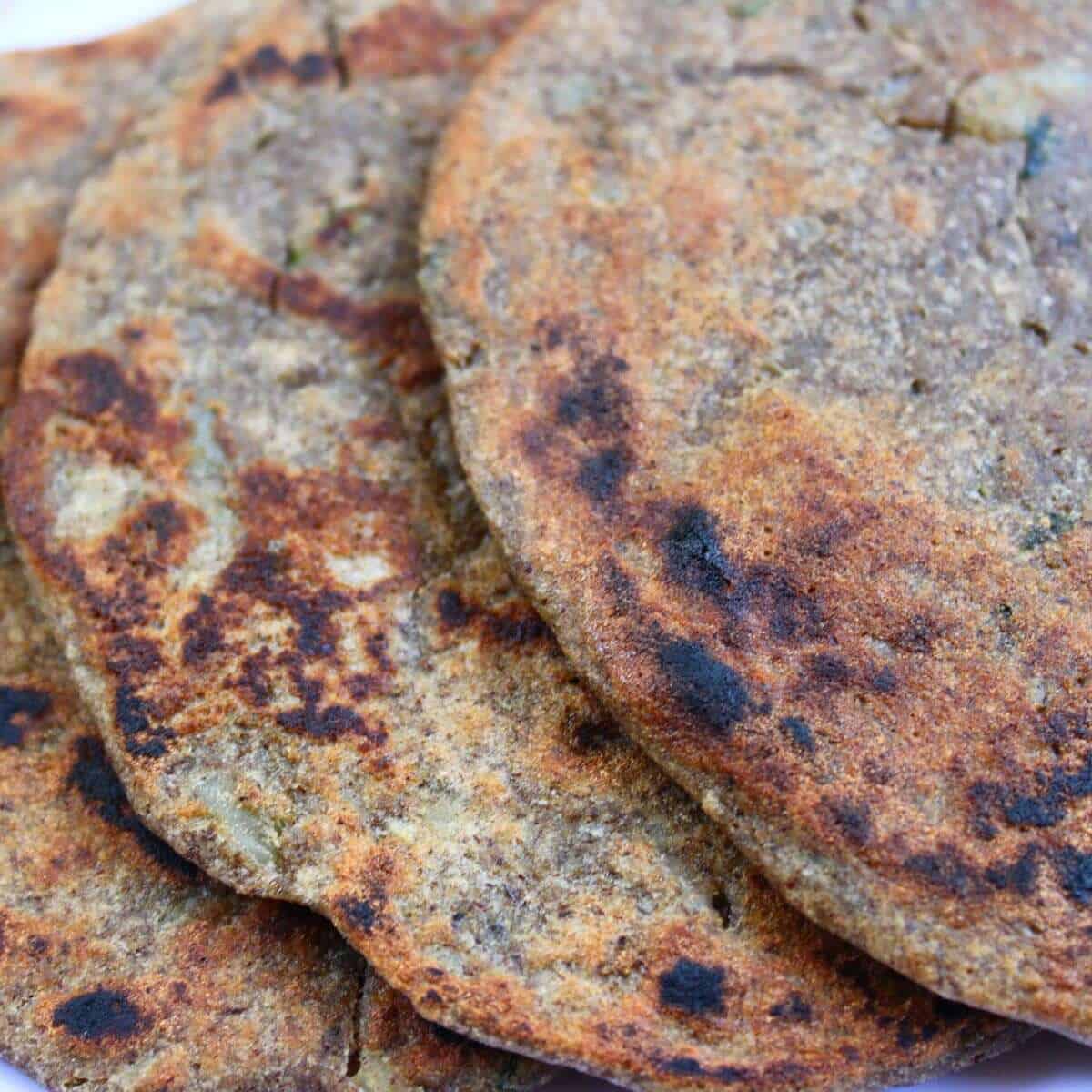
For centuries—evidence dating back almost 5,000 years—buckwheat has been cultivated as a crop in the Himalayan regions of Tibet, China, and India.
In China, buckwheat is considered a superfood and is a staple in their cuisine, often consumed in the form of noodles or as porridge.
Japan: If you’ve ventured into the realm of gluten-free, grain-free food, it’s highly unlikely you haven’t heard of Japan’s famous soba noodles. These noodles are made from buckwheat flour and are used in various hot and cold dishes.
Not all soba noodles are gluten and grain-free. Some may have some wheat flour mixed to make it easier to produce and cook.
India: Buckwheat flour has been part of Indian cuisine, especially during fasting, for centuries. In some parts of India, particularly in the Northern and Western regions, the general rule of fasting is that grains i.e. wheat, rice, and millet are off the menu. This is when grain-free flours such as kuttu (buckwheat in Hindi), rajgira (amaranth), singhara (water chestnut), and sabudana (sago pearls) replace grains.
What is buckwheat called In India?
In different regions of India buckwheat is known by various names due to local languages and traditions.
Kuttu: In the Hindi-speaking regions buckwheat is commonly known as Kuttu. It’s especially popular during fasting periods, like Navratri, when some people avoid grains and consume Kuttu flour to make dishes like Kuttu ki roti or Kuttu ke pakode. It is known as Papparai in the Tamil-speaking regions; and Ogalu in the Telugu-speaking regions such as Andhra Pradesh and Telangana; Kutto or Kutti in Gujarati buckwheat, and Fafra in Marathi.
Europe: From the Himalayan regions, buckwheat traveled west, making its way to Europe. While Eastern Europeans enjoy buckwheat in porridge, stews, pilafs, and blinis, the French use buckwheat to make crepes and galettes. Breads and cookies are some of the popular ways to use buckwheat in baking.
In some European countries, toasted buckwheat is known as kasha. In Russia and Poland, kasha is also a breakfast food that is somewhat like porridge.
Buckwheat, the main ingredient in many traditional recipes across Asia and Europe, is truly a global superstar!
When buying buckwheat pancakes mix, noodles, and pasta, keep in mind that many of these products contain some amount of wheat flour. Look specifically for the gluten-free label. Cooking with pure buckwheat flour can be tricky, so when enjoying a buckwheat-based dish at a restaurant or a friend's place, be sure to check that no wheat flour has been mixed in.
Buckwheat nutrition
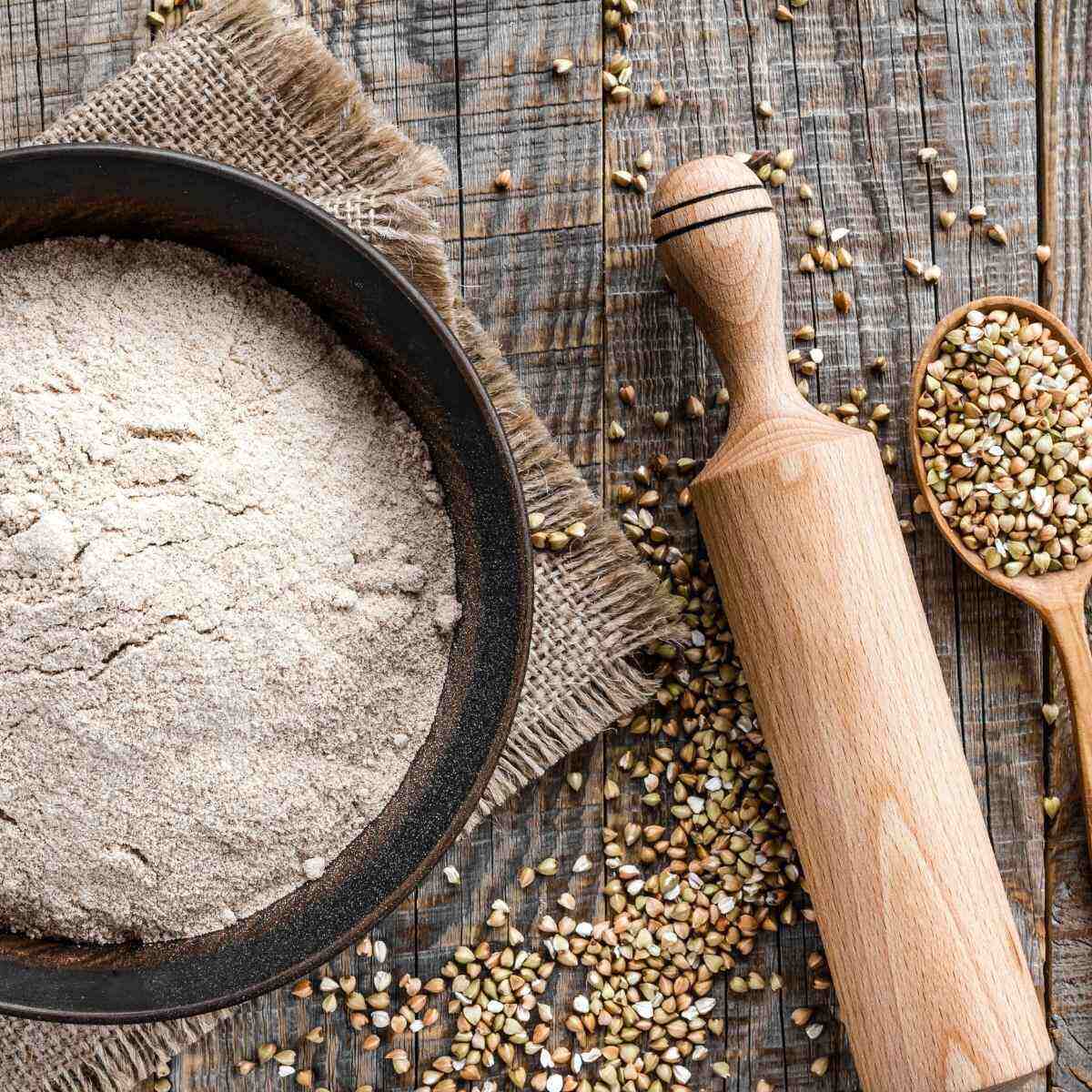
This earthy-flavored pseudo-cereal packs a lot of punch with its every (no) grain! A rich source of protein, dietary fiber, and iron, buckwheat is a terrific energy source!
It has a unique nutrient composition that includes lysine-rich protein - a type of protein usually found in meat and certain types of cheese.
Nutrition values of buckwheat: 100g of cooked buckwheat has approximately: 343 calories, 13.3g of protein, 71.5g of carbohydrates, 10g of fiber, and 3.4g of fat. Not only is buckwheat a good source of protein, but it is also a complete protein i.e. it contains all 9 of the essential amino acids (whoa!). For additional information check out the recipe card below.
Buckwheat benefits: Research shows that buckwheat is more satiating than grains and it has prebiotics that aid in digestive health.
How to cook buckwheat?
When you look at buckwheat groats, you might think they’ll take a long time to cook -that’s what I thought too!
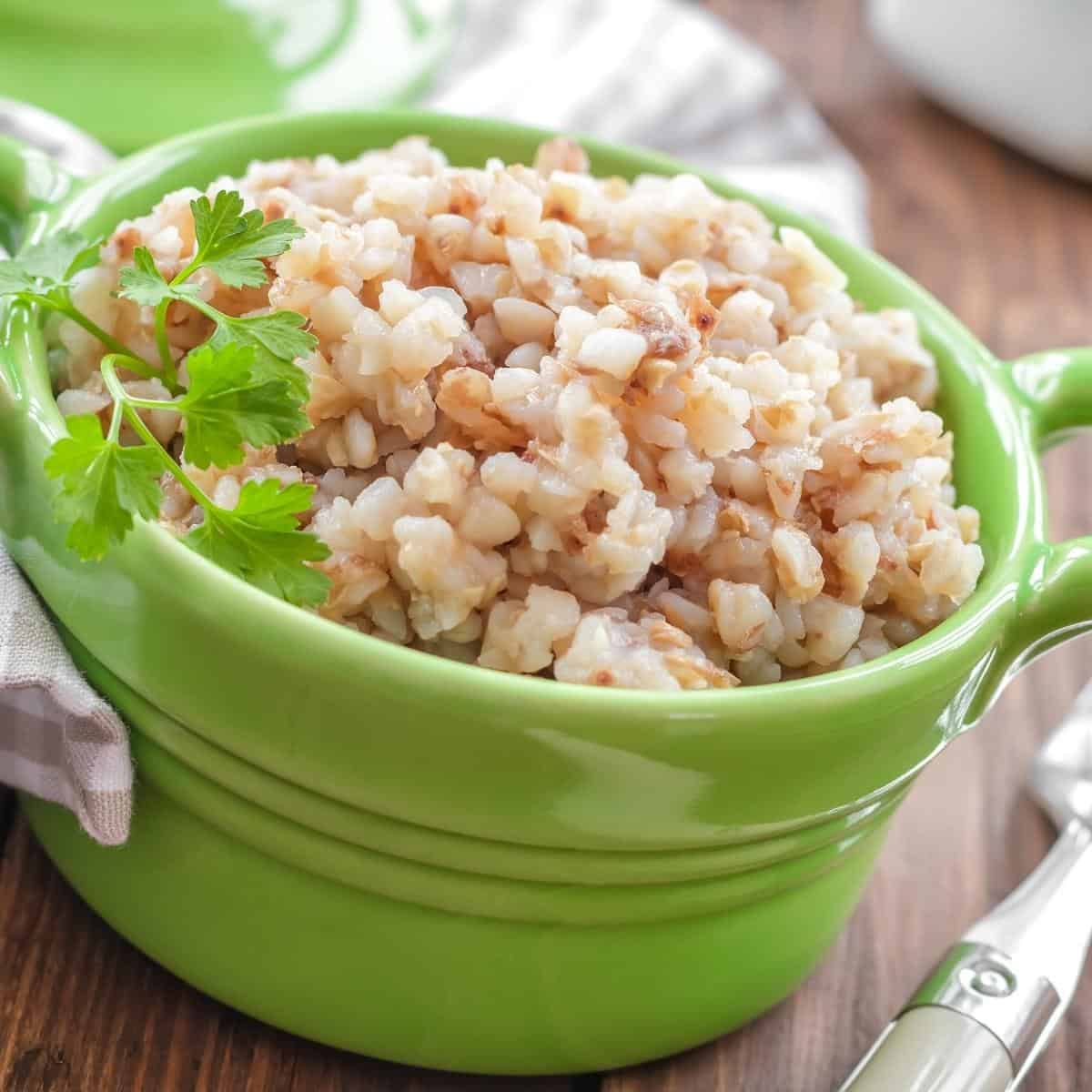
Surprisingly, buckwheat cooks fast! It only takes 10–12 minutes to cook the groats. Yes, really! That’s how easy it is to cook! Here’s how I cook buckwheat. Also, see the video below and the recipe card for quantities.
Cook buckwheat: Bring 4 cups of water to a boil in a rice pot or saucepan over medium-high heat.
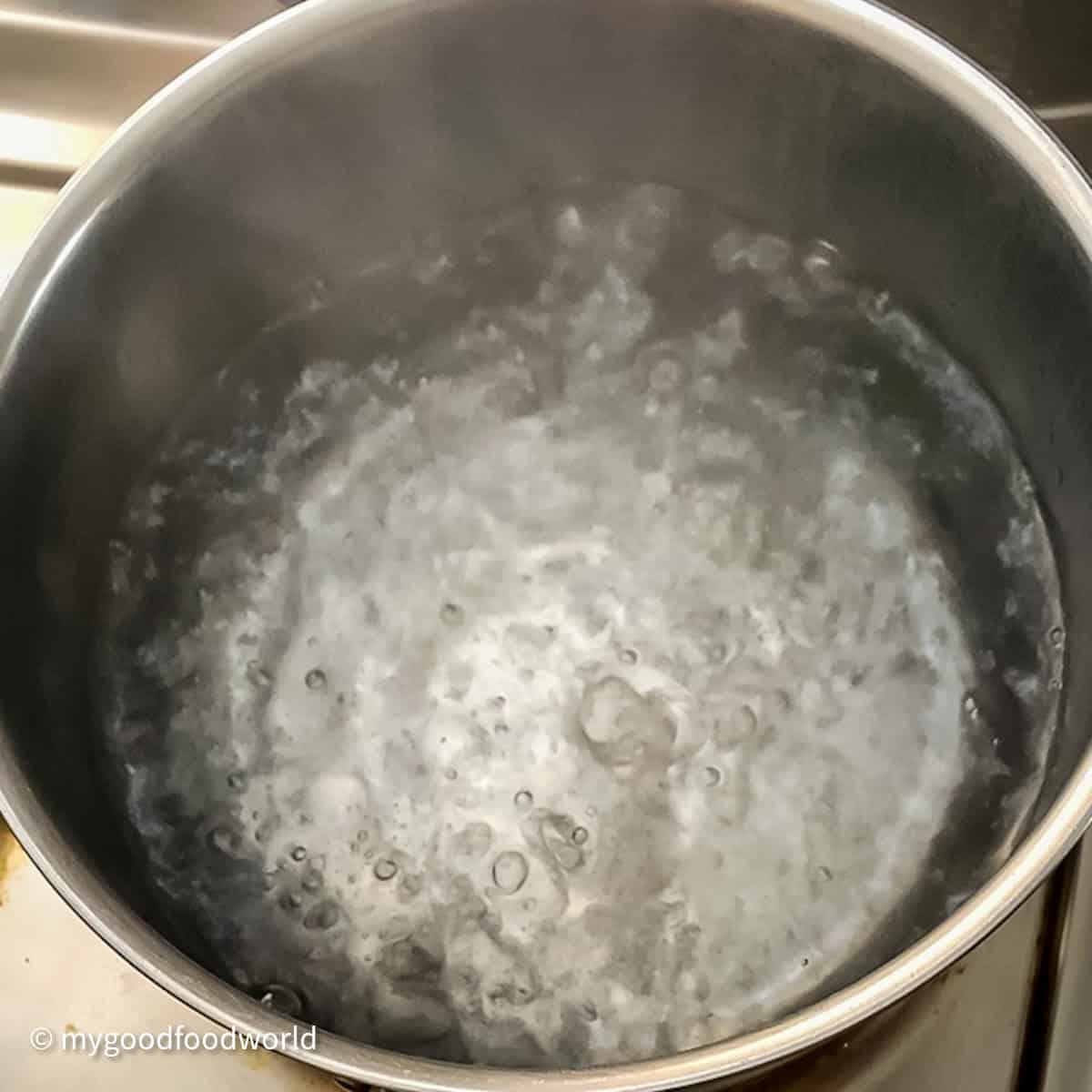
Once the water reaches a rolling boil, add ½ cup of buckwheat groats.
I use pre-cleaned groats, so I add them to the water without washing them. If your groats aren’t pre-cleaned, rinse and drain them first.
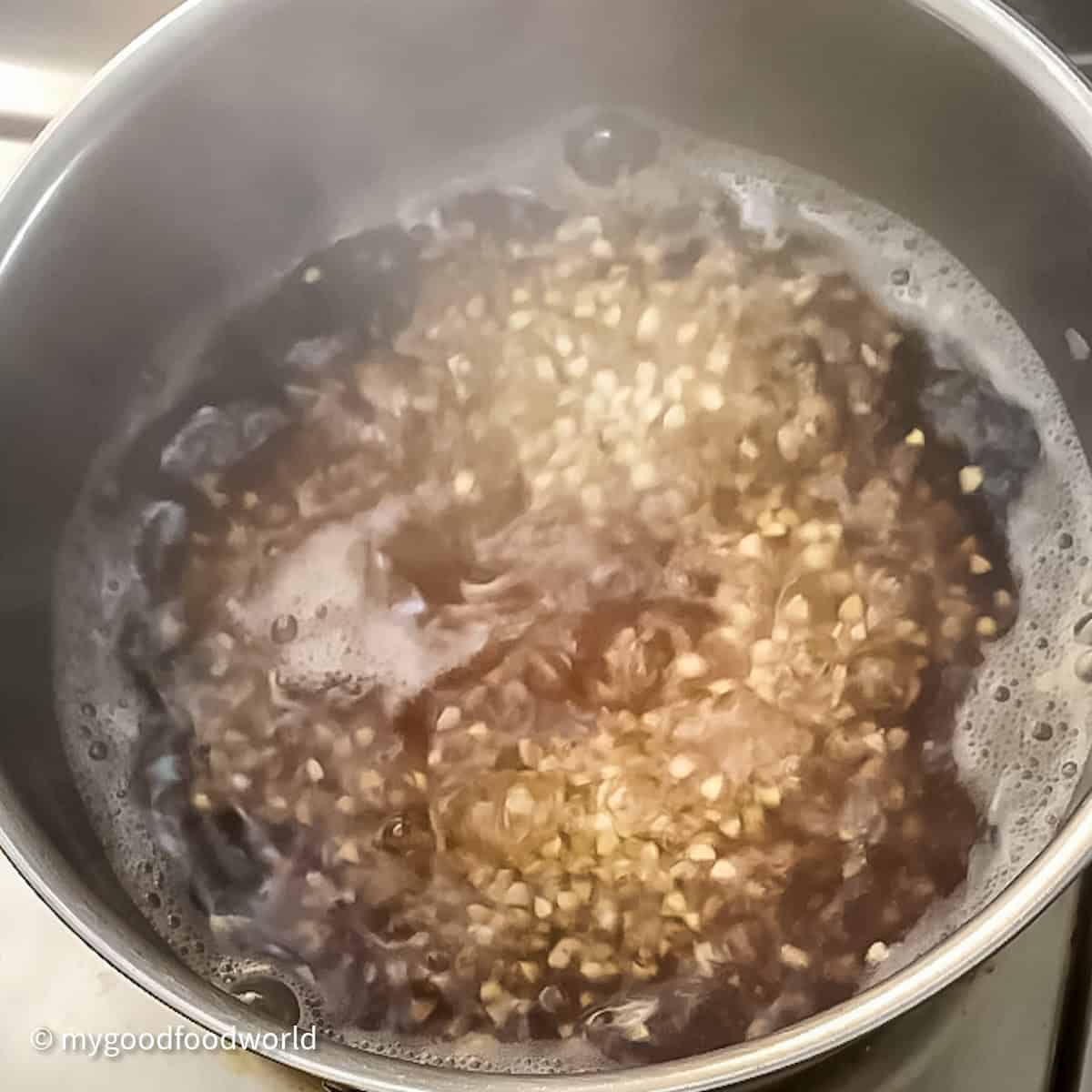
Cook over medium-high heat for 10–12 minutes, stirring once or twice.
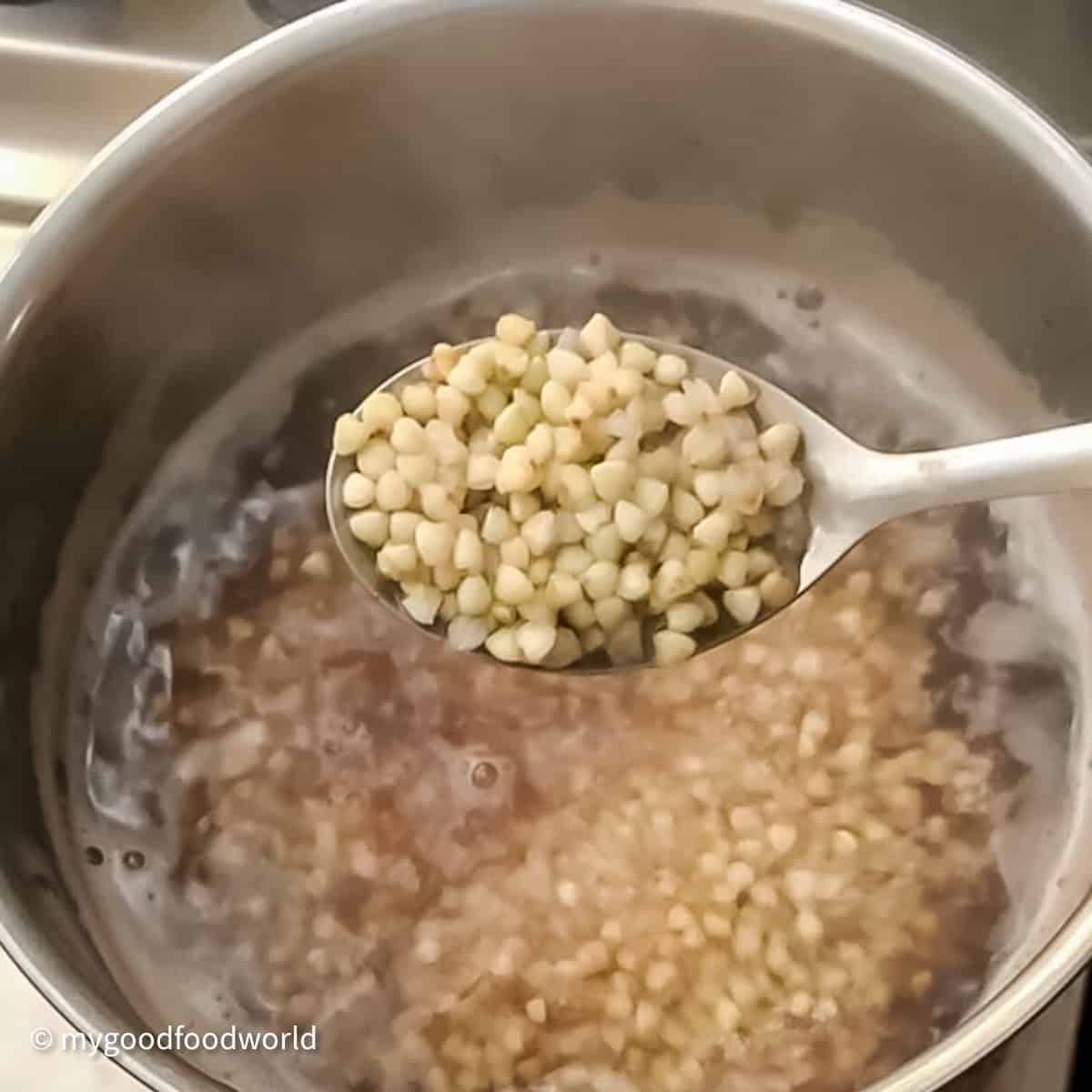
You’ll know the buckwheat is cooked when the grains look "opaque" and start to split at the ends. When you pick up one grain (careful, it’ll be hot!), it should crush easily between your fingers.
After 10–12 minutes, the groats will be soft but still have a bit of crunch. If you prefer them softer and mushier, cook for an additional 2–3 minutes.
Drain all the water, and your groats are ready to serve! (See serving suggestions below.)
Serving suggestions
Whether you use it in your dishes as groats or flour, there's no doubt that buckwheat is a versatile ingredient. It features regularly in my menu rotation, as I have grain-free meals at least two days a week. Here are some of the ways I love including buckwheat in my meals:
In the meal shown below, I’ve paired cooked whole buckwheat groats with tomato stew, walnuts, pan-fried spicy paneer, and mung beans curry—it makes such a wholesome meal!
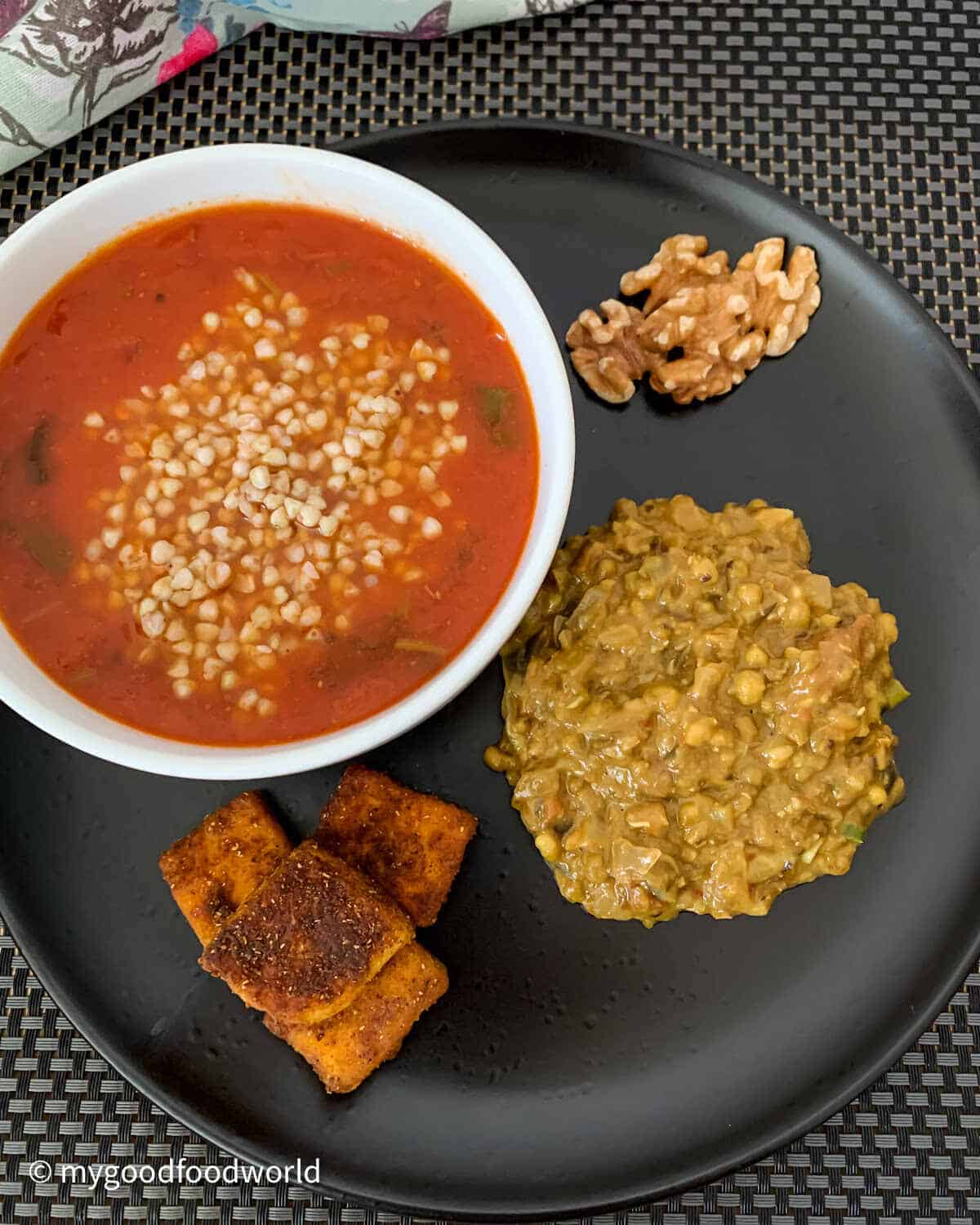
In the lunch bowl below is one of my favorite late-fall to early-winter meals when cranberries are in season. Here, I’ve paired cooked buckwheat with stir-fried string beans, scrambled paneer with spices, and cranberry-flavored lentils.
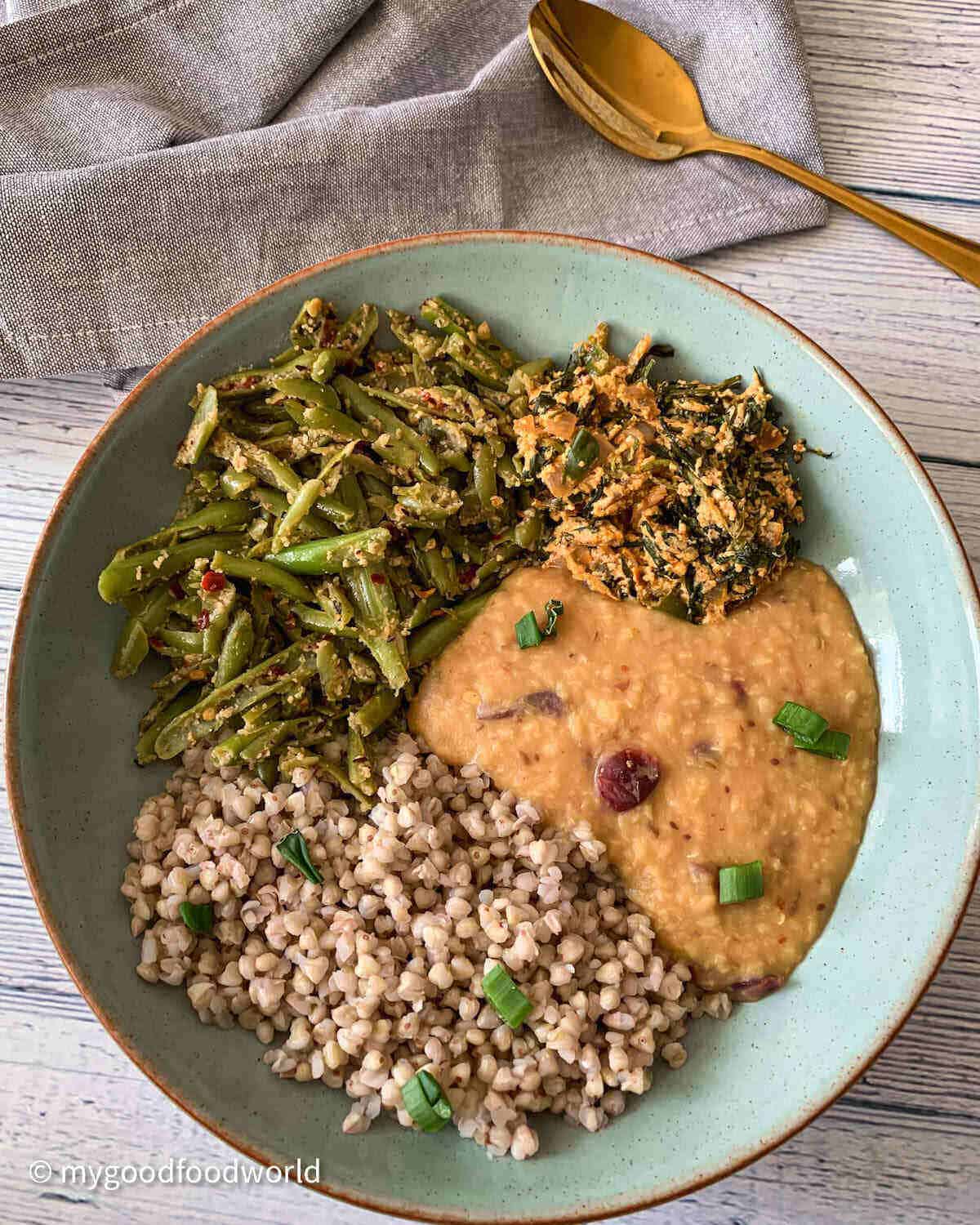
There’s also pan-fried paneer (again ) with stir fry spinach and a simple moong dal.
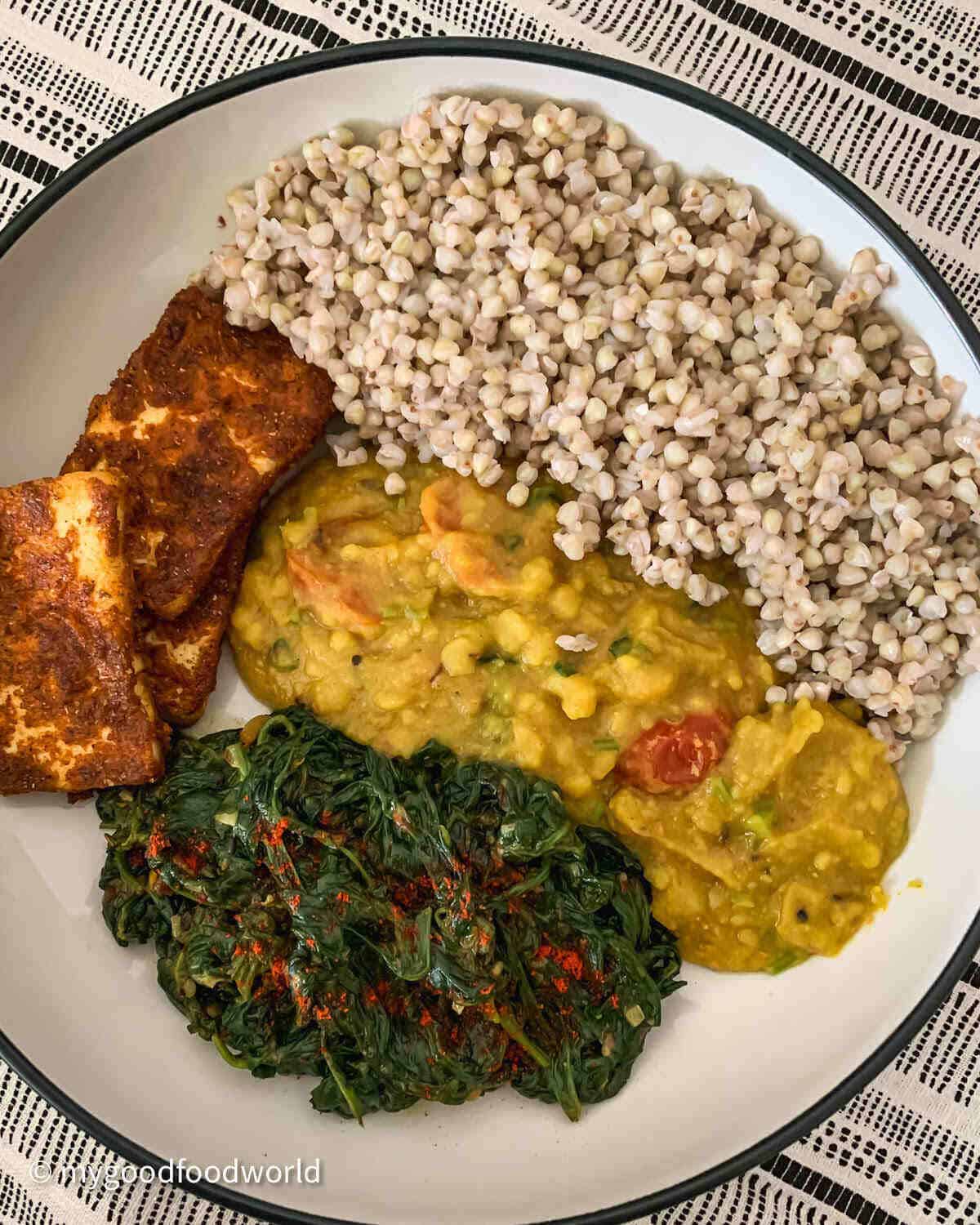
In this hearty meal, I’ve served buckwheat groats with smoked eggplant curry, spiced lentils, and cabbage poriyal (sauteed cabbage).
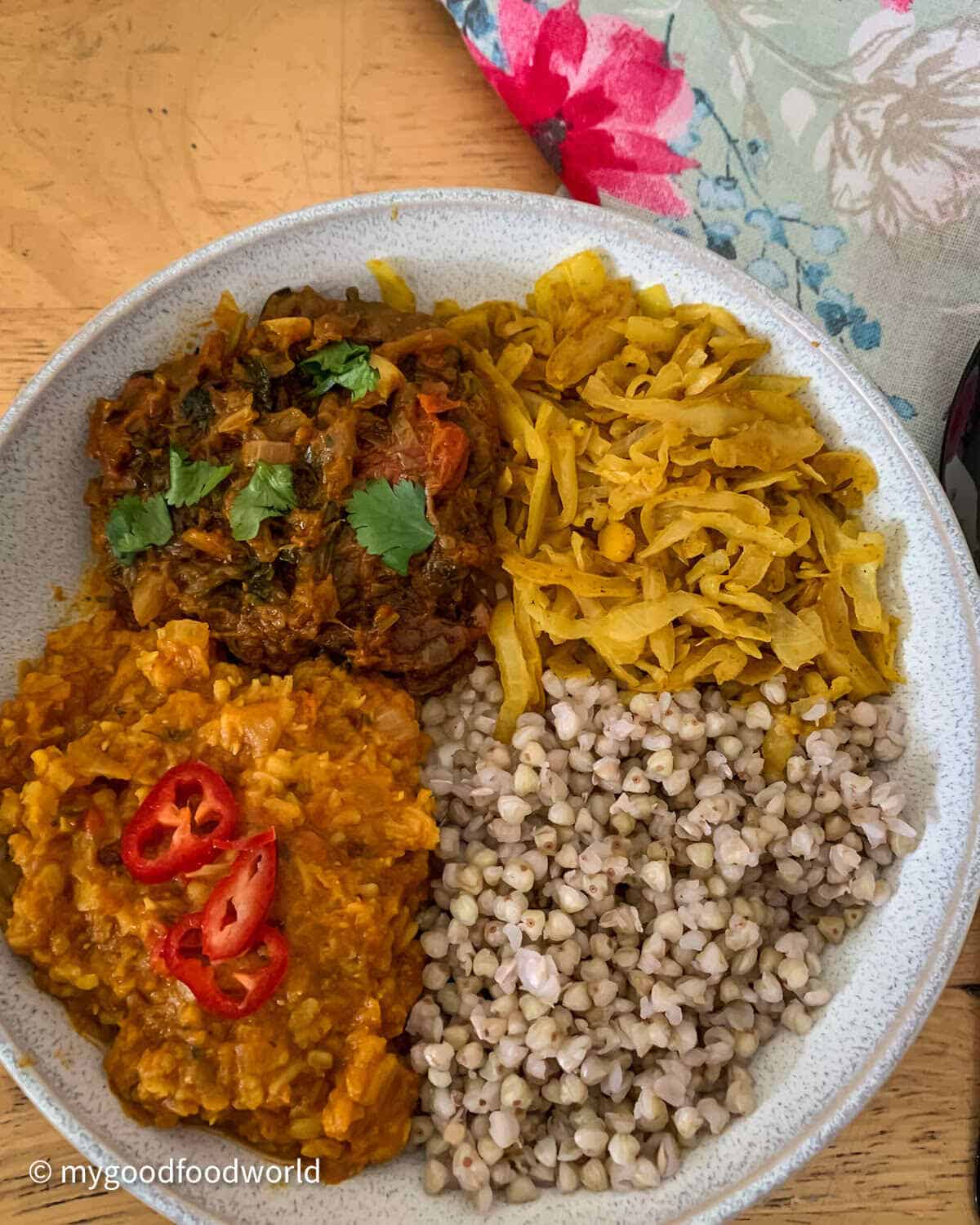
This gluten free naan made with buckwheat flour and potatoes is a family favorite, and I often serve it with sauteed okra and cucumber raita.
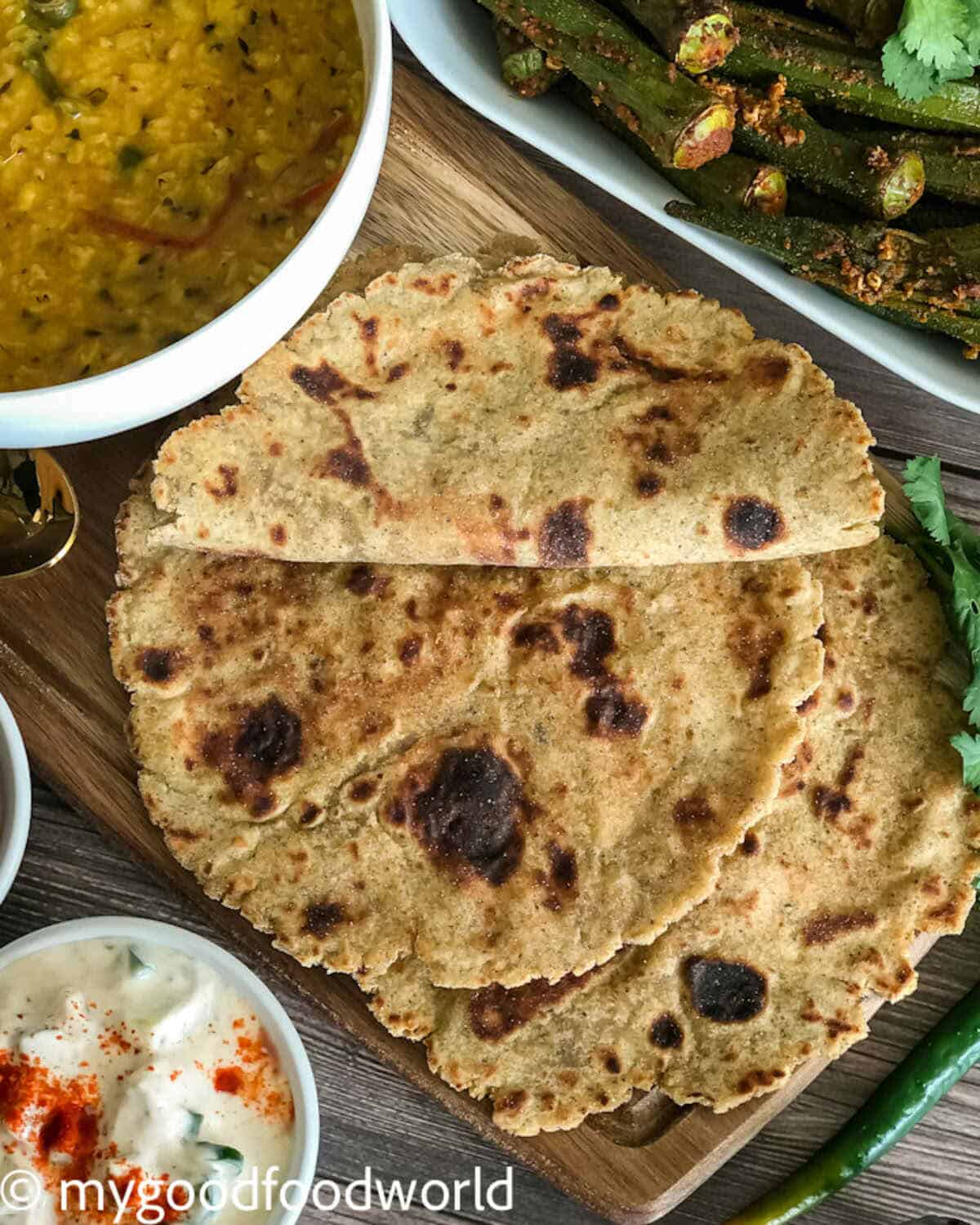
Frequently Asked Questions
Yes, buckwheat is generally safe for people with celiac disease! It's naturally gluten free, which makes it a great alternative for those avoiding gluten. However, cross-contamination can be a concern if it's processed in facilities that handle gluten-containing grains. To be sure, always check that the buckwheat product is labeled as gluten-free. So, with the right precautions, buckwheat can be a fantastic addition to a gluten-free diet!
Buckwheat is gluten free and therefore is a great choice for those with a wheat allergy! Since it’s not related to wheat and doesn’t contain wheat proteins, it’s generally safe for people avoiding wheat. Just be cautious about cross-contamination if it’s processed alongside wheat products. Always check labels to make sure there’s no risk of cross-contact. So, buckwheat can be a fantastic, allergy-friendly option for your meals!
Great question! If you're avoiding gluten, there are plenty of grain options to choose from. Some popular gluten free grains include rice, quinoa, millet, amaranth, and buckwheat. These grains are naturally free of gluten and can be a delicious part of your meals. Just make sure they’re not processed in facilities that handle gluten-containing grains to avoid cross-contamination. Enjoy exploring these gluten-free grains in your cooking!
If you’re steering clear of gluten, there are a few grains you’ll want to avoid. Wheat, barley, and rye are the main culprits, as they all contain gluten. This includes their various forms, like wheat flour, barley malt, and rye bread. Oats can also be tricky because they’re often processed with gluten-containing grains, so if you’re sensitive, make sure to choose certified gluten-free oats. Sticking to gluten-free grains like rice, quinoa, and buckwheat can keep your meals safe and delicious!
Made this recipe? I’d love to know what you think! Leave a ★★★★★ rating and a review below—it motivates me to create more great content for you. You can also connect with me on Facebook and Instagram. And don’t forget to subscribe to my newsletter, where I share free recipes, tips, and more!
📖 Recipe
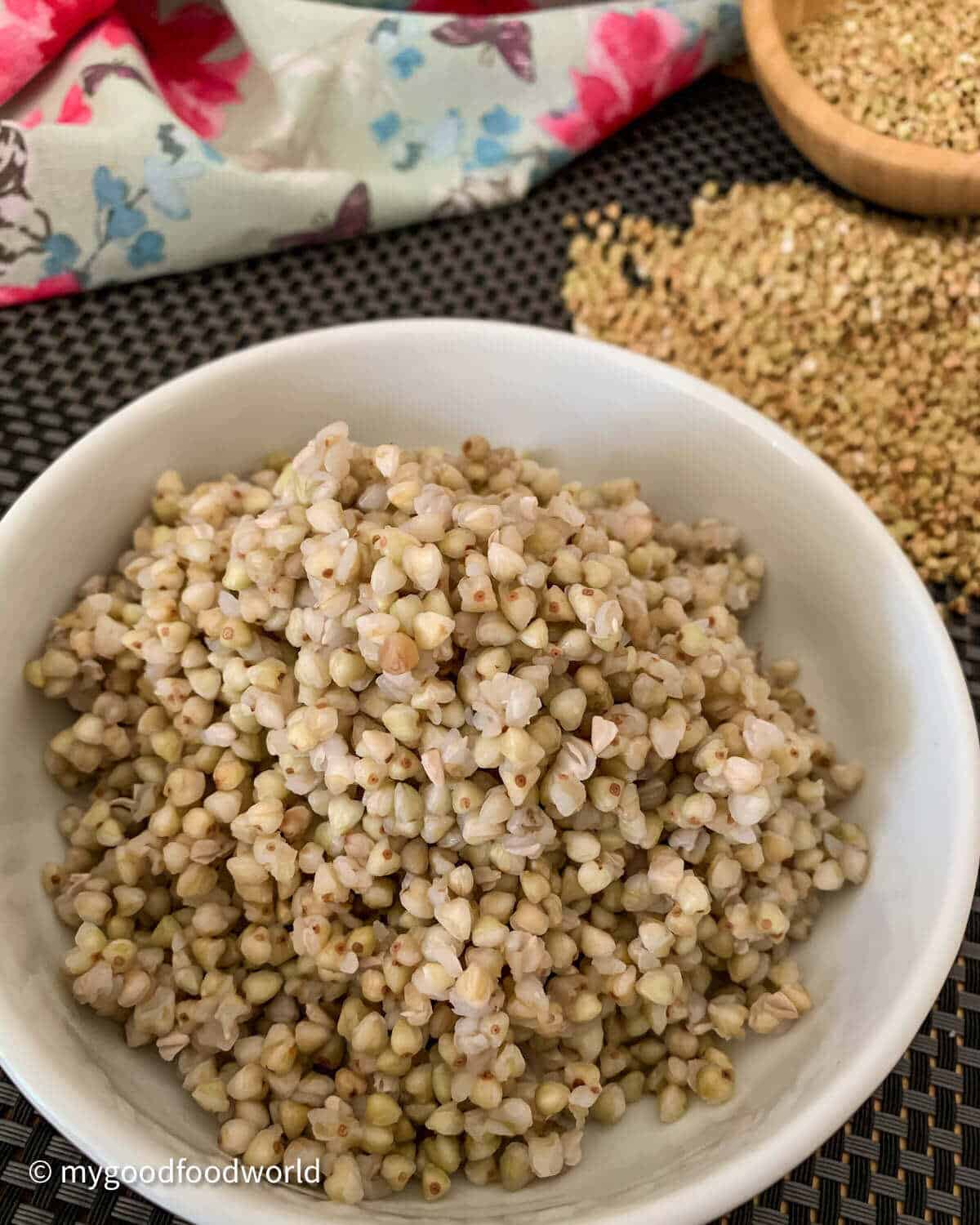
How To Cook Buckwheat Groats in just 15 minutes!
Save This Recipe
Enter your email & I'll send it to your inbox.
By submitting this form, you consent to receive emails from MyGoodFoodWorld
Ingredients
Equipment
Instructions
- Place a rice pot with water on medium-high heat and bring it to a rolling boil. Once the water is boiling, add the buckwheat.4 cups water
- Let it cook, on medium-high heat, for 10–12 minutes, stirring once or twice.½ cup (~100g) buckwheat groats
- Around the 10-minute mark, the groats will be soft but still have a bit of crunch (al dente). I like them that way. If you prefer them softer and mushier, cook them for an additional 2–3 minutes.
- Drain all the water, and your buckwheat groats are ready to serve. See serving suggestions in the article above.
Nutrition
The nutritional information is calculated using an online calculator and is based on available ingredients and preparation. It should not be considered a substitute for a professional nutritionists' advice. Changing the quantities and cooking technique will alter the nutritional calculations.
Video

Notes
Alternative quantities provided in the recipe card are for 1x only.
Our content aims to be informative and educational, but it should not replace professional medical advice. Since manufacturing processes can vary and cross-contamination is possible, it's essential to verify product labels and allergen information. Make sure all ingredients align with your specific allergies. As readers, you bear the responsibility for ensuring allergen safety when buying or consuming foods.



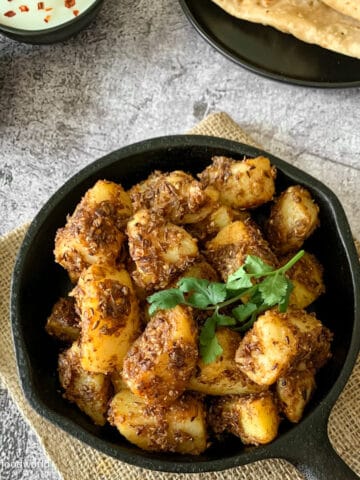
Catherine Kay says
Thanks for this great guide on buckwheat! I want to incorporate it more in my diet.
Padma Kumar says
Thank you for your feedback!
Trichelle says
Living a gluten free lifestyle can be tough, especially when you're just starting out. Articles like this have saved me on my journey!
Padma Kumar says
So glad that you found this helpful!
Sarah says
I didn’t realize it was gluten free!
Also, I tried making it at home a few years ago, and it didn’t turn out well. I will have to try it again with your tips!
Padma Kumar says
Thank you Sarah. Hope it works out for you this time.
Michaela at That Grateful Mom says
Great information on buckwheat! Good option for those who are gluten free. Thanks for sharing!
Padma Kumar says
Thank you so much!
Katie says
I didn't know much about buckwheat other than my Mom used to make buckwheat pancakes for us growing up. Thank you for debunking the idea that it's a form of gluten- I had no idea it was gluten free!
Padma Kumar says
Thank you so much for your feedback, Katie.
Hari says
I love the tips you are presenting on this post for cooking buckwheat. So helpful and thank you!
Padma Kumar says
Thank you for your feedback Hari.
Kristine says
Great information and review of Buckwheat as a gluten free alternative to wheat. And it’s not a grain. I needed knew that. Thank you!
Padma Kumar says
Thank you Kristine- it was a lovely journey of learning while researching!
Cynthia says
I've recently gone gluten free. Thia article was very helpful. I have yet to try buckwheat. It will be next on my list!
Padma Kumar says
Thank you Cynthia. Good luck on you Gf journey. Make buckwheat your friend 🙂
Fransic verso says
I've tried it at home but didn't know how to cook it. My mom cooked it for us. This is interesting to know how to cook it.
Padma Kumar says
Thank you Fransic. Glad to know that this post has been helpful. Truth be told, it took me some time to get used to the texture of buckwheat, but the more I have them, the more I am enjoying them.
Transatlantic Notes says
I will admit I don't know much about buckwheat so it was great to find out more about it; I think I can find ways to add it into my diet as it seems to have quite a lot of benefits. Thanks for sharing!
Molly | transatlanticnotes.com
Padma Kumar says
Molly, so glad that you found this article useful. I hope you can try this delicious and healthy ingredient soon. xx Padma